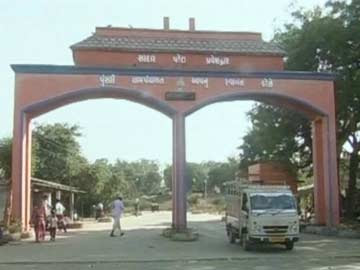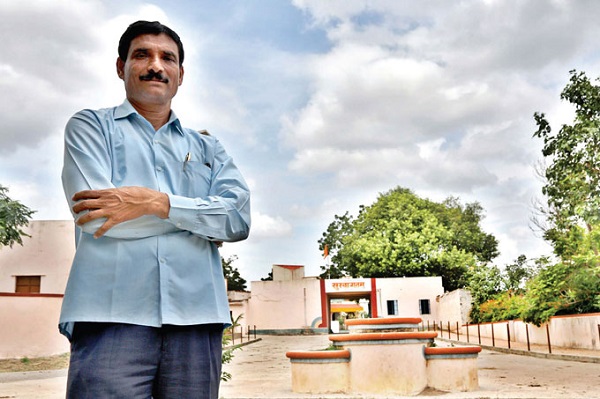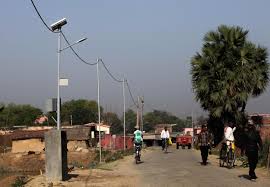The soul of India lives in its villages, 60 percent of the population still lives in villages of India. Lack of proper transportation. Most villages have poor connectivity from one place to another.
Despite several problems faced by our villages here are few villages that make them unique from others.
Mawlynnong ,Meghalaya
1. Mawlynnong – Asia’s cleanest village
Mawlynnong, a small village in Meghalaya, Around 100km from Shillong there is a magical paradise – Mawlynnong – a small village which won the status of being the cleanest village (2003), not just in India, but in Asia
Punsari. Gujarat
2. Punsari – The village withWiFi, CCTVs, AC classrooms and more
Punsari, located in Gujarat, puts most metros to shame. Funded by the Indian government and the village’s own funding model, Punsari is no NRI-blessed zone. The village also boasts of a mini-bus commute system and various other facilities.
Popatrao Pawar
Hiware Bazar, Ahmednagar district,Maharashtra
3. Hiware Bazar – The village of 60 millionaires
Hiware Bazar, located in the Ahmednagar district of Maharashtra, has transformed from being a place fraught with issues to being possibly the richest village in India. The sole reason for this fairy-tale change is one man called Popatrao Pawar. He banned all addictive substances to minimize expense and encouraged the villagers to invest in rain-water harvesting, milch cattle, etc.
The monthly per capita income has crossed Rs.30,000 & in a village of 235 families and 1,250 individuals, there are 60 millionaires!
Dharnai, a village in Bihar
4. Dharnai – First fully solar-powered village
Dharnai, a village in Bihar, beat 30 years of darkness by developing its own solar-powered system for electricity. With the aid of Greenpeace, Dharnai declared itself an enery-independent village in July. Students no long need to limit their studies to the day time, women no longer limit themselves to stepping out in the day in this village of 2400 residents. Dharnai, now proudly owns and operates its own electricity production system which is located right inside the village.

Sarpanch Neelam, Chappar village in Haryana
5. Chappar – A village that distributes sweets when a girl is born
A Village In Haryana Distributes Sweets When A Girl Child Is Born – Thanks To This Woman Sarpanch, Neelam. She made it her life’s mission to change the attitude of the villagers towards women, and she succeeded. Not only do the women of the village not wear the ghunghat anymore, but despite Haryana being the state with the lowest girls ratio in this village every newborn, regardless of his/her sex, is welcomed into the world with sweets and festivities.
Korkrebellur, a small village in Karnataka
6. Korkrebellur – A village that really loves its birds
Korkrebellur, a small village in Karnataka, believes in the conservation of nature. While most other villages consider birds a nuisance because they harm crops, Kokrebellur boasts of rare species of birds that fly around and don’t even mind humans much. The villagers treat their winged compatriots as family and have even created an area for wounded birds to rest and heal.
Ballia village of Uttar Pradesh
7. Ballia – The village that beat arsenic poisoning with an indigenous method
Ballia village of Uttar Pradesh had an itchy problem to deal with. The water that the villagers were drinking contained arsenic, which causes serious skin problems and even physical deformation. Arsenic is a harmless element on its own, but when combined with oxygen or water, it turns toxic.
Ironically, the village faced the problem after the government introduced many hand-pumps in the area for easy water access. The level at which the hand-pumps were dug led to excessive interaction between arsenic and water. When the villagers realised what had happened, instead of waiting for the government to act on it, they (physically) fixed their old wells and went back to an older, safer time.
Pothanikkad, Kerala
8. Pothanikkad – The village with a 100% literacy rate
Unsurprisingly in Kerala, Pothanikkad village was the first in the country to achieve a 100% literacy rate. Not only does the village boast of city-standard high-schools, but it also has primary schools and private schools. According to the 2001 census there are 17563 residents living in the village.
Bekkinakeri village in Karnataka
9. Bekkinakeri – The village that rid itself of open defecation by ‘greeting’ lota-bearers
Bekkinakeri village council to change the entrenched habit of village elders of defecating in open fields. They redefined the point of wishing someone a ‘Good morning. Frustrated with the practice of open defecation, the village council attempted to curb it by requesting people to not do so. When that didn’t work, they stationed themselves early morning near ‘popular’ defecation sites and wished every perpetrator a very good morning. The trick worked! Too embarrassed to go on with their business, the openly defecating population has now stopped the practice completely.
Shani Shingnapur, located in Maharashtra
10. Shani Shingnapur – A village so safe that people don’t need doors
Shani Shingnapur, located in Maharashtra, is a village that defies every newspaper report you have ever read. Touted as the safest village in India, this place is known for its lack of doors to houses. Not just that, there is no police station in the village. And no, we are not making this up.
By the way, Shani Shingnapur has ‘broken’ another interesting record. The village has the country’s first lockless bank branch (UCO bank) now.
















